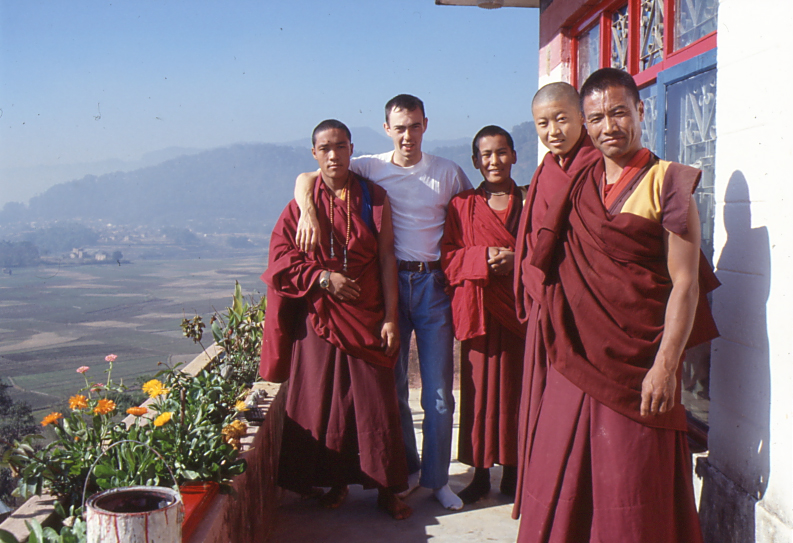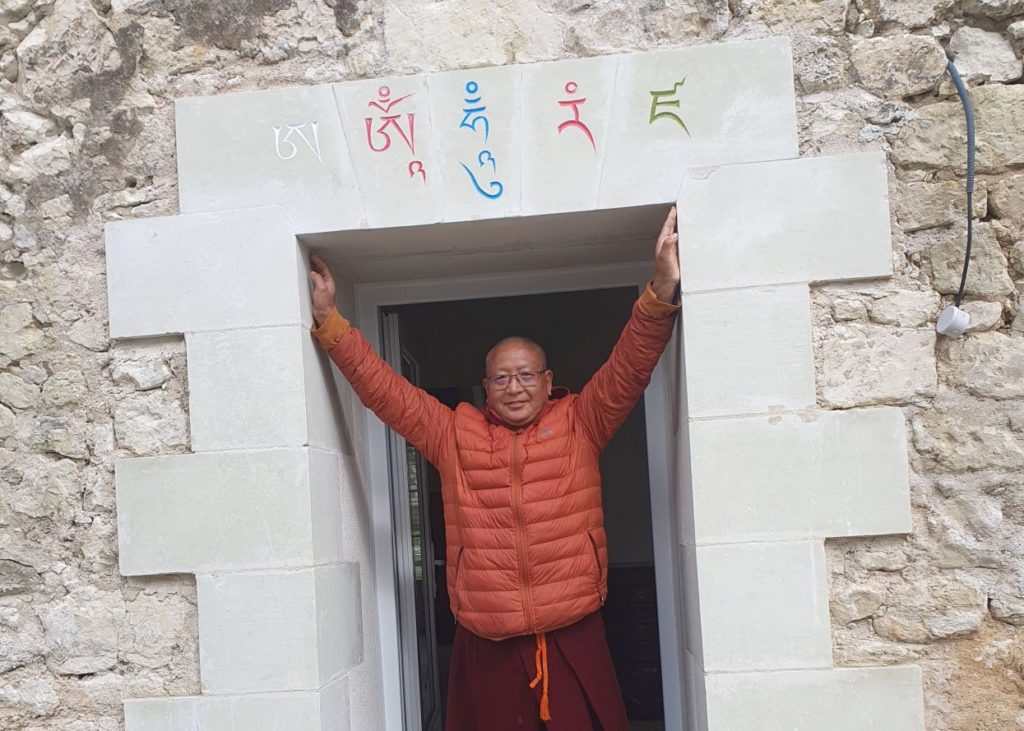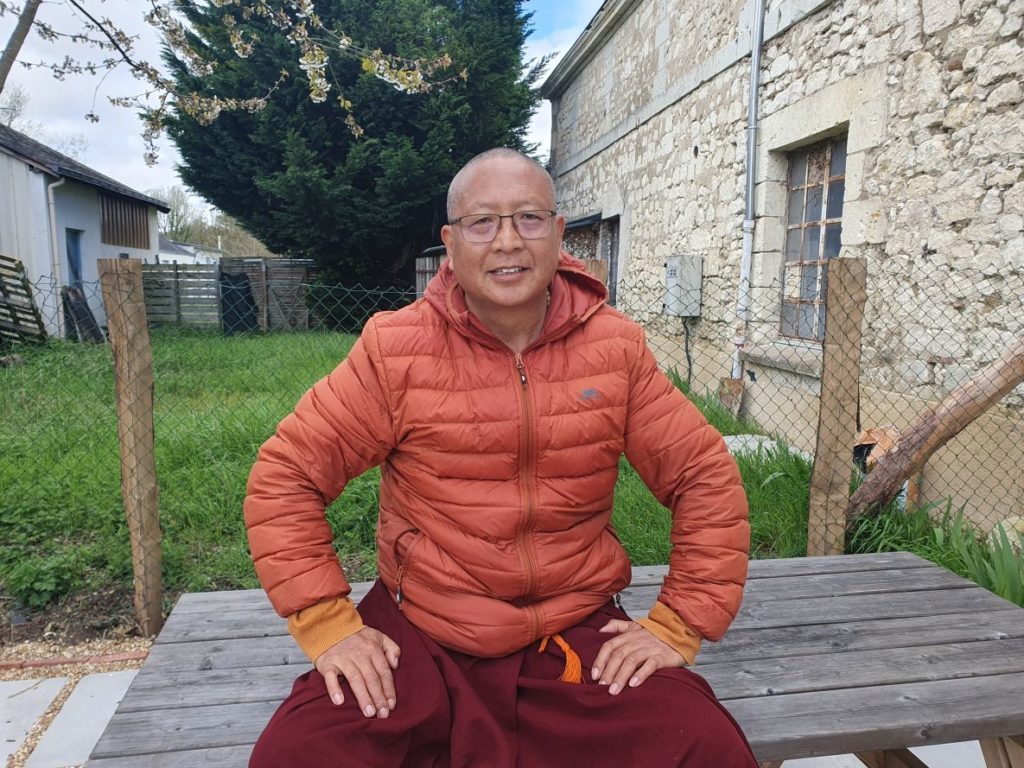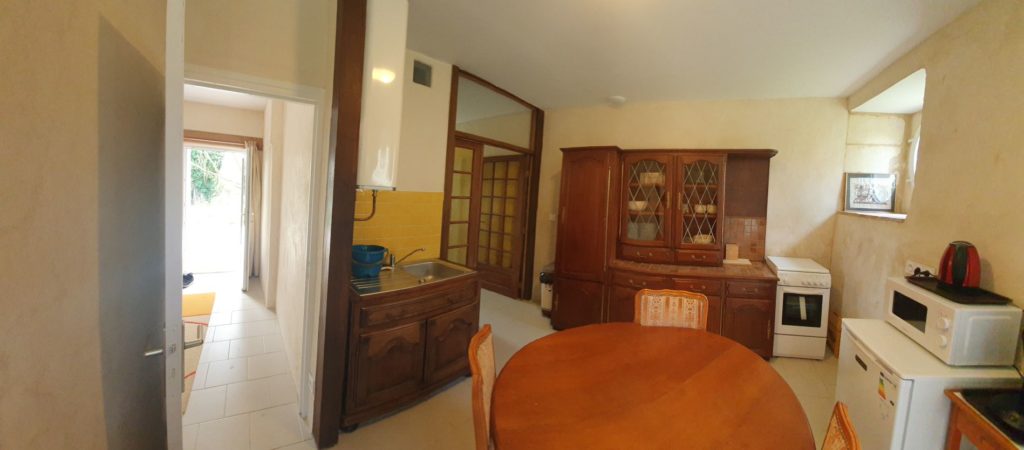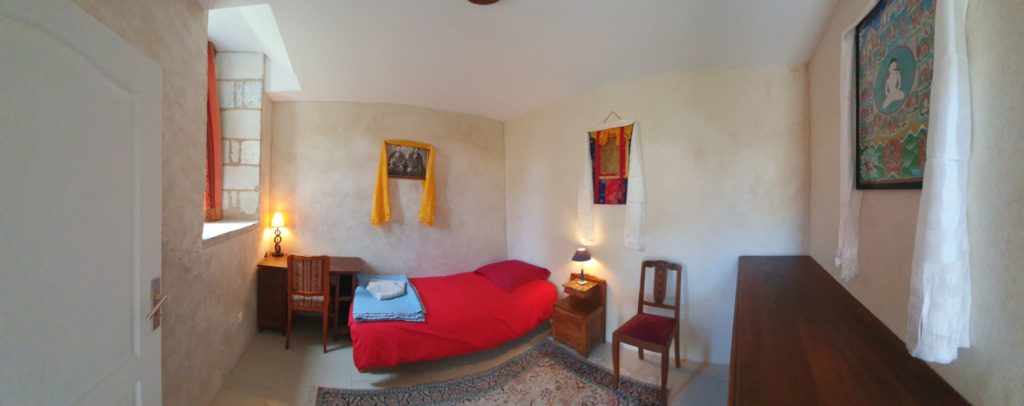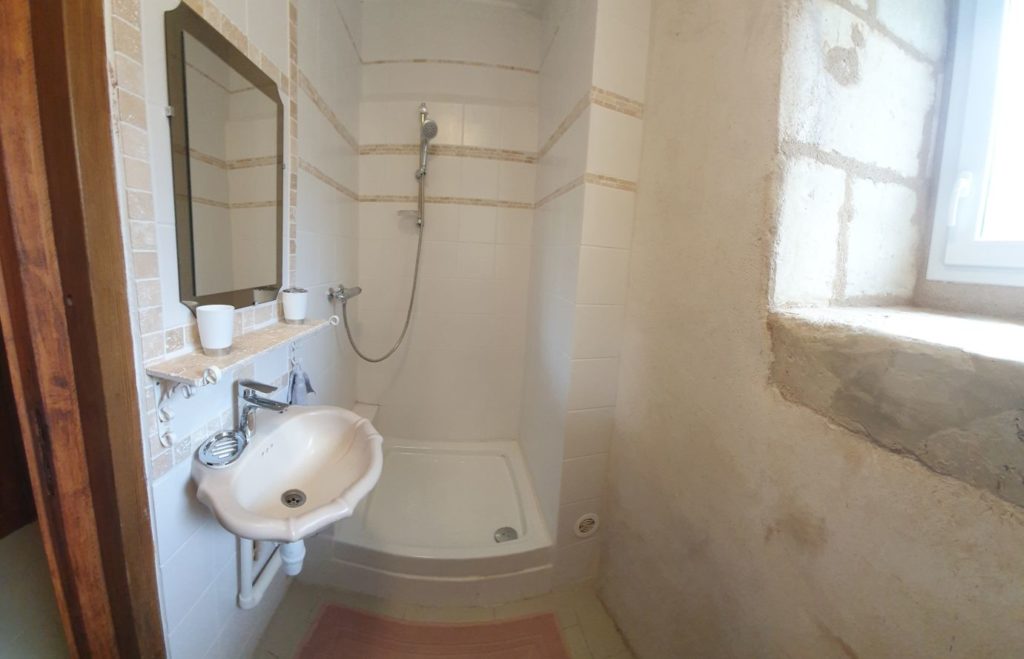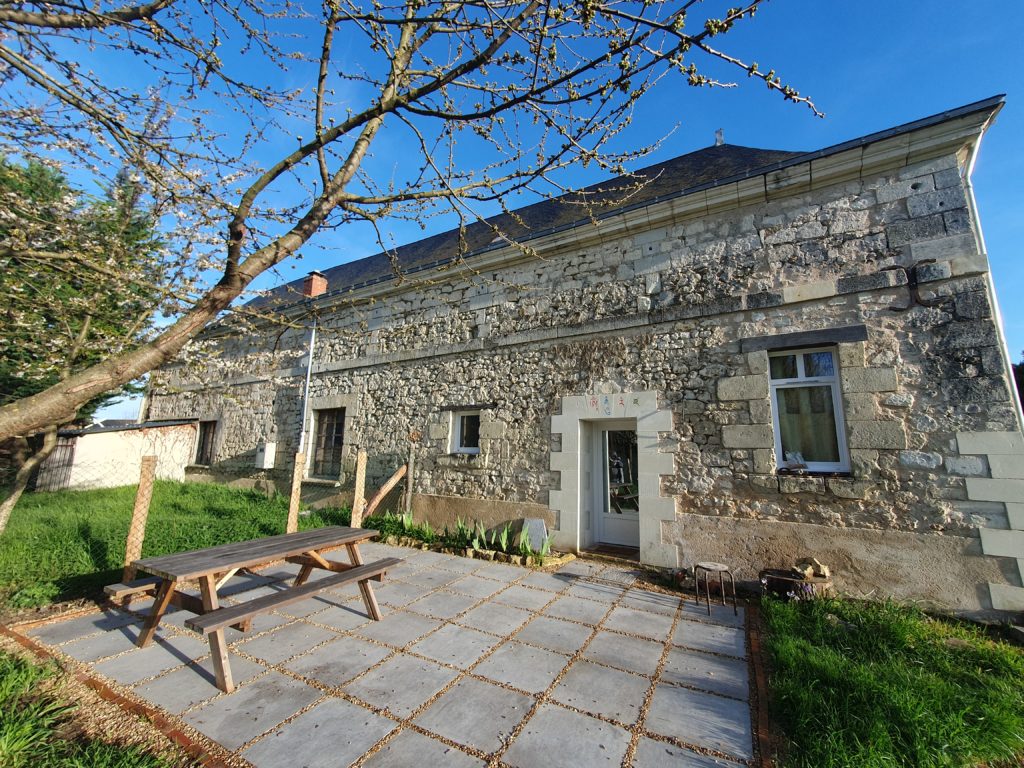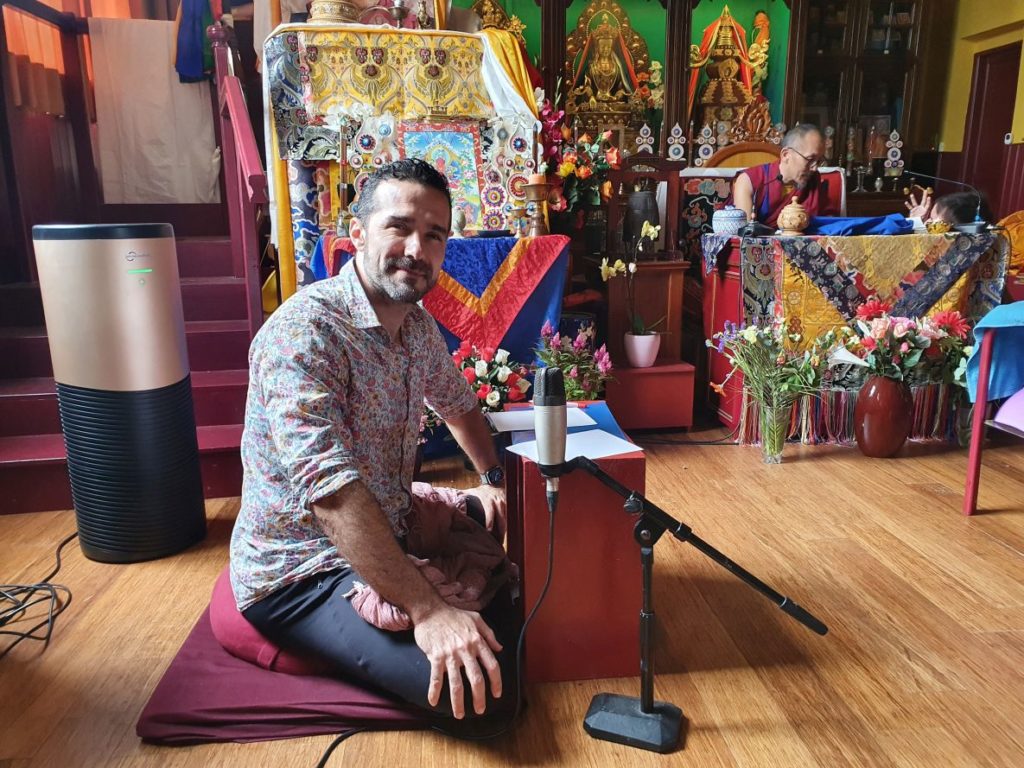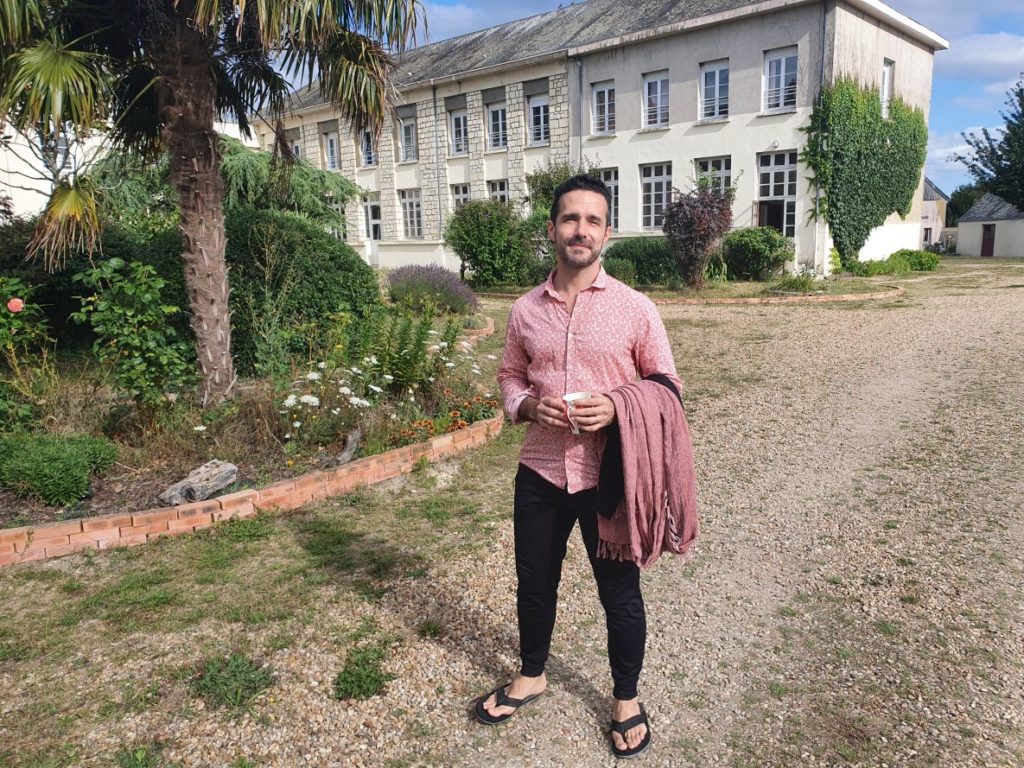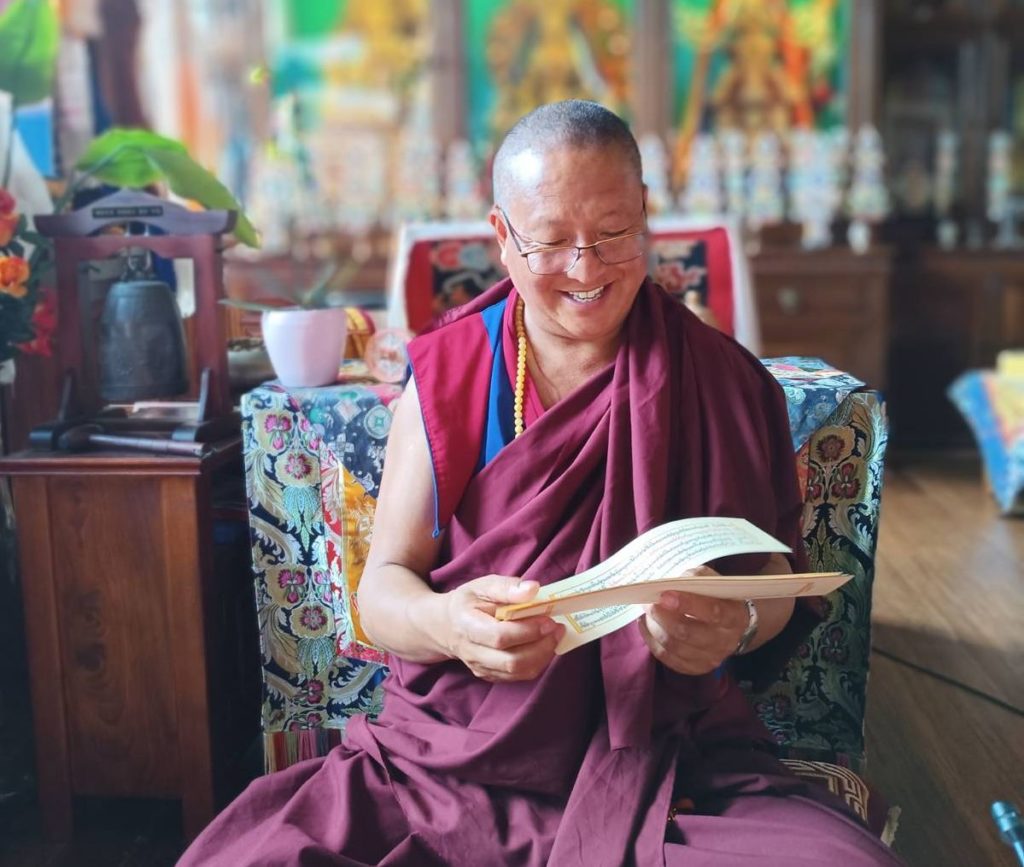I have studied the trulkhor of many schools and now I teach it my way, says an accomplished master of Tibetan yoga
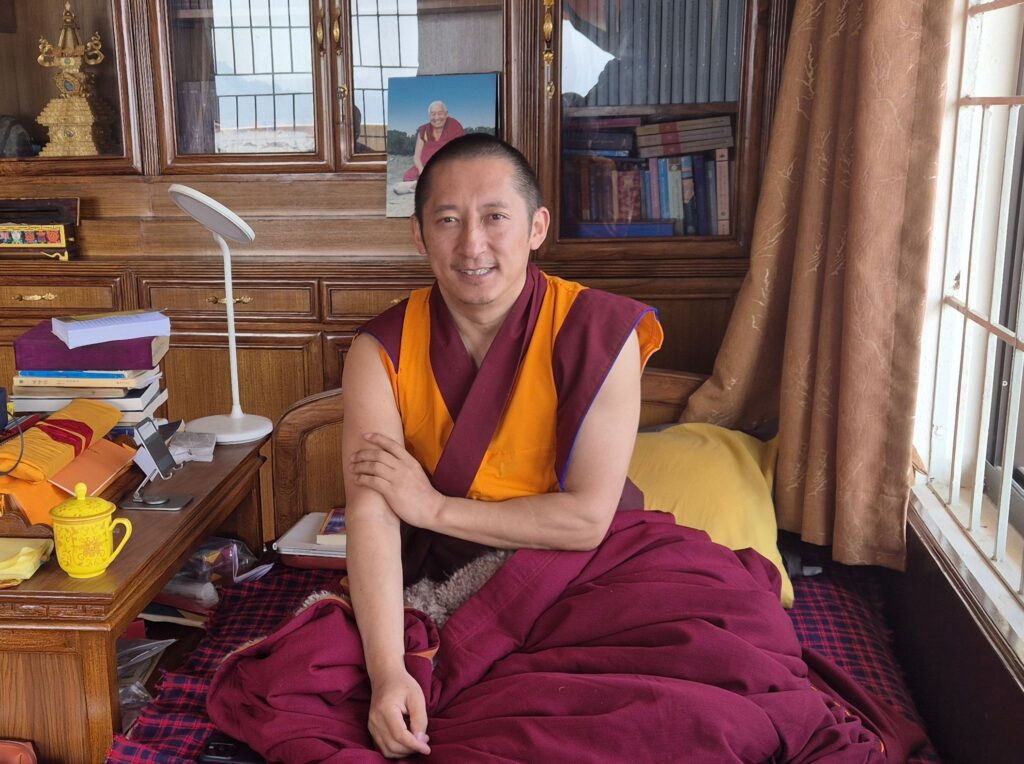
Akarpa Lobsang Rinpoche has studied and practiced hundreds of techniques of Tibetan yoga and teaches the trulkhor to Bön and Buddhist practitioners and to broader public all over the world. The story of his life that he agreed to share with the readers of the Speech of Delight shows the uniquely extensive knowledge he has accumulated in this field throughout the years, starting in his own Bön tradition and continuing in other contexts. The interview with Rinpoche took place at Triten Norbutse on February 18th, 2025; the Anthropologist and Tibetologist Anna Sehnalova kindly translated from Tibetan to English and reviewed the text.
I come from Amdo, one of the three main historical and cultural parts of Tibet: Ü-Tsang, Kham, and Amdo. The area where I grew up is called Ngawa. I come from a nomadic family. When I was a child, my two uncles were monks at Nangzhig, the largest Bönpo monastery in the world, located in Ngawa. The uncles inspired me to follow in their footsteps, and I entered the monastery when I was five years old. The younger of my uncles, Yongdzin Yeshe Gyaltsen, was a great scholar and practitioner. For many years I studied with him and other learned lamas of the monastery.
When I was eleven, I went with a group of monks to the Murdo mountain in Gyalrong, also in Amdo. For Bönpos, it is a sacred mountain. We went there to meditate in caves and stayed for one year and a half. It was very difficult for me, I was just a kid, with the needs of a normal kid who wants to play, have friends around and eat normal meals.
Instead, we were living in extreme conditions in caves in deep mountains, with lack of food, bad weather, surrounded by wild animals, and we had to repeat the same practice day after day. All this was very harsh and boring. I dreamt of escaping and going back to the monastery, where there was enough food, warm shelter and friends to play with. But I did not dare to do that alone. After some time though, my attitude toward my practice changed.
A few years later, I went to the region of Sharkhog, also in Eastern Tibet. It is another stronghold of Bön. I stayed in the monastery called Garme Gompa for four years, studying the sutras, such as Prajnaparamitas, and tsalung practices with Yongdzin Yeshe Gyaltsen, who was also one of the teachers of the 34th Menri Trizin Dawa Dargyal. Yongdzin Yeshe Gyaltsen is a great Dzogchen practitioner. He follows strict discipline and is very knowledgeable. Later, I went to Central Tibet with him. We visited the monasteries of Yungdrung Ling and Menri. Close to Menri, Yeru Wensaka– the first monastery of Yungdrung Bön from the late 11th century AD – existed, before itwas destroyed by a flood. Prominent masters of Bön used to practice Atri meditation on its grounds. As we did, staying there for a few months and meditating. Again, it was not easy. The climate was harsh, my teacher was fully focused on his practice, and I had to provide food. I went begging in a village nearby, knocking on people’s doors. Sometimes people gave little tsampa or even a bit of meat to me; other times I did not get anything. We lived on very little food.
After, my teacher and I moved to another important place for Bönpos, Kongpo Bönri, a sacred mountain in Southern Tibet. There, the food was much better, and the weather was warm, but it was raining a lot, and my blankets were soaked with water. My main aspiration was to learn and deepen my practice of Dzogchen and tsalung. I was not interested in doing circumambulations around the mountain at that time. I just practiced staying in Takla Mebar’s cave.
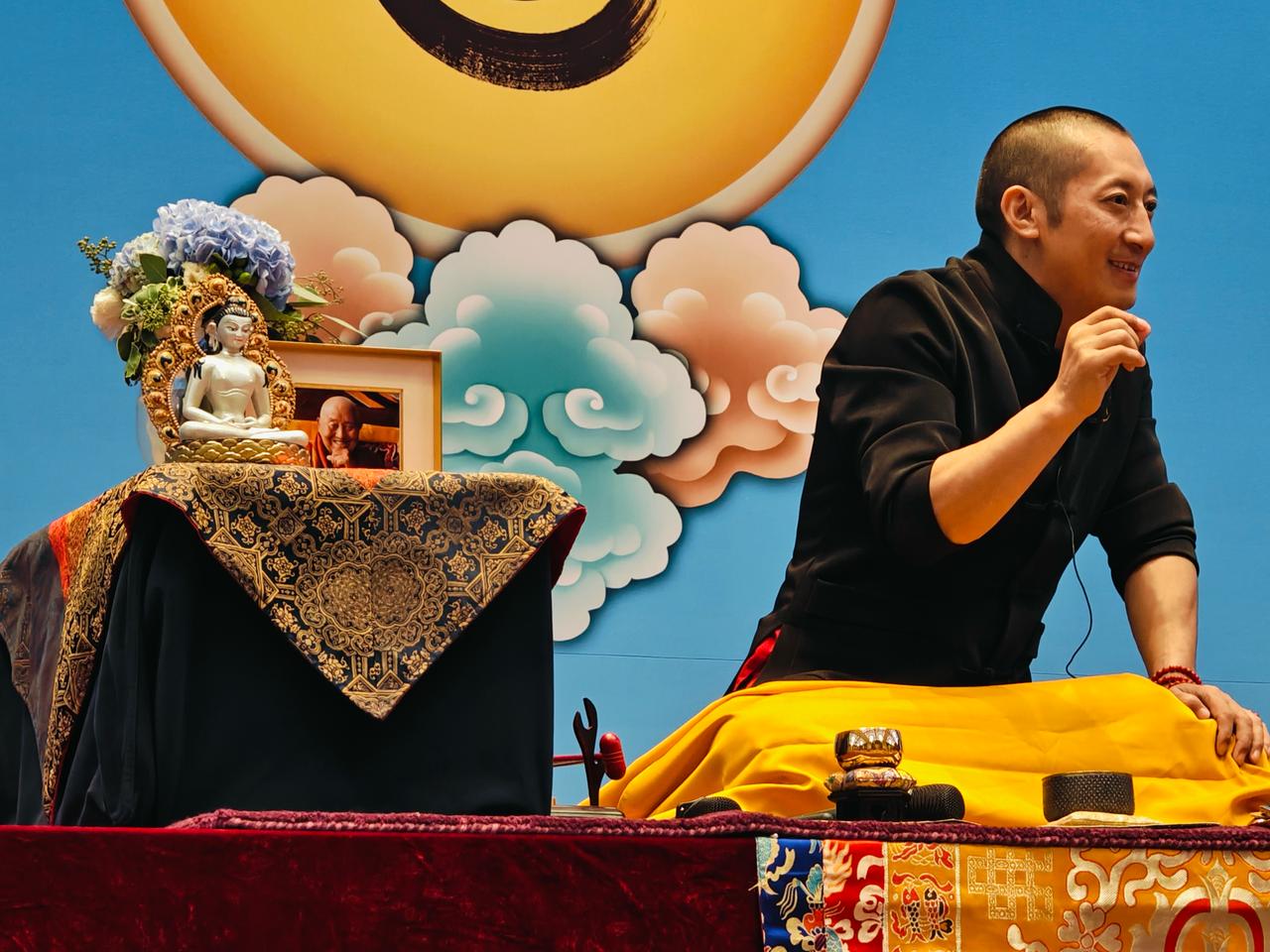
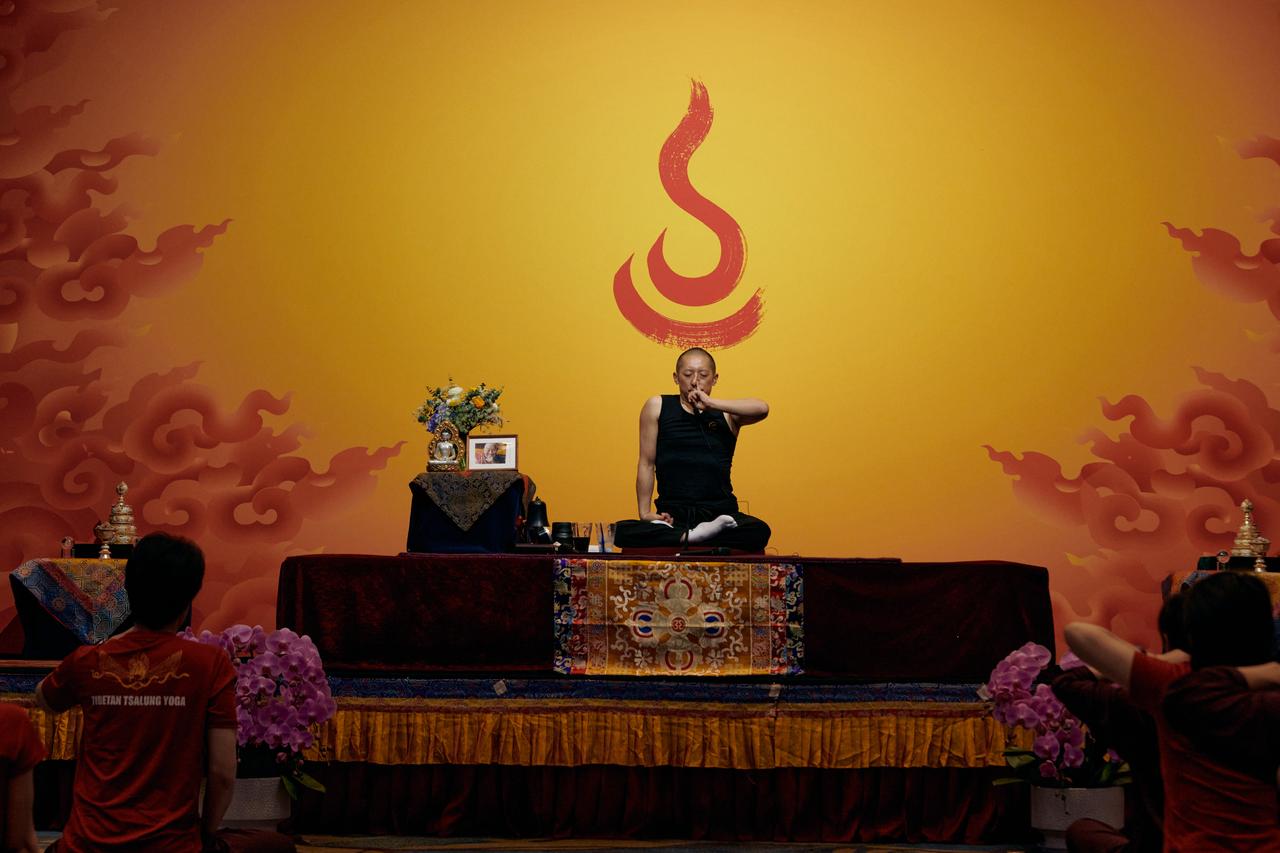
One day, after many months, we just came out of a retreat. As we were walking downhill down a mountain, we met an old lady. At that time, we had nothing left to eat. We were exhausted. Still, we had to walk for a few more days. The old lady noticed our exhaustion and warmly invited my master and me to have a dinner in her house. We stayed in her simple house for one night. She made tsampa with butter and fried vegetables. It was the best food I had ever eaten! The next morning she packed a bag of tsampa for us. I will never forget this experience.
After that we returned to Ngawa and I decided to deepen my studies in dialectics. I was strong in debating; I used to be the best debater in my monastery and I looked for further challenges. I decided to go to a Gelug monastery, Amchog Tsenyi Gompa, also located in Ngawa. Its school was renowned as the best for dialectics in the area. I did not speak about my decision with my teacher or family, I went home, stole my father’s favorite motorcycle, and rode for 40-50 kilometers to reach the monastery.
At first, the monastery did not want to accept me, I was only a teenager of 15 or 16 years and coming alone. But when I performed my debating skills in front of a lama, they changed their mind and let me study with them. The monastery only provided teaching, and I needed to pay for my room and board. I sold my father’s motorcycle to pay for my daily expenses. They allowed me to stay in a small space in the monastery which was used as a storage for cow dung. I lived there for about a year.
Afterwards, I went back to Nangzhig and spent many years there, focusing on various texts of the sutras, tantras and Dzogchen.
In 2001, I went to the Buddhist College of Minnan, a respected institution for Chinese Buddhist education in the city of Xiamen on the Chinese eastern coast. I studied various Buddhist schools at the college and got to know Zen for the first time. My masters said Dzogchen and Zen have similar teachings, and that’s why I was very excited to start learning Zen.
At that time, I was the only Tibetan at the college. I knew no Chinese, but the monks were very helpful and strongly supported me. I made rapid progress and after a year and a half, I could understand almost everything. After two years, I could give a teaching in Chinese at the college and in some other places. I taught ngondro, preliminaries, basics of Mahayana Buddhism, and meditation.
Many monks who I knew in China belonged to Pure Land Buddhism and Zen (Chan) Buddhism. Zen was my favorite. I used to sit in meditation with a Zen master. We were friends and very close to each other. Although each of us was doing our own way of meditation, our core views on meditation were the same. I drank a lot of tea with him, the green tea typically served during Zen ceremonies. Because of my interest in Zen, later, I went to Japan many times and spent a few weeks in Japanese Zen monasteries. I experienced strict discipline and pure practice there. Not much was said by teachers, no big speeches on advanced theories. It was: just sit. We got up at 2:45 AM every day, and the bedtime was 8 PM.
In September 2005, I went to Beijing, to Peking University which is one of the top universities of China. I pursued my interest in different spiritual traditions and enrolled in comparative religious studies. A student must know three languages to be accepted to the course: besides Chinese, also English, and Pali / Sanskrit, or Tibetan. I did not have sufficient knowledge of English, but one of the Chinese teachers who I met at the university recommended me to his colleagues and helped me to be admitted. For one year, I studied various schools of Buddhism, Hinduism, Christianity, Islam, and Judaism. It broadened my horizons and changed my mind.
I realized that the essence of religious study is to develop oneself to become a better human being; just studying theories without putting them into practice is pointless. With this realization, I left my studies at the university after one year and devoted myself to the practice.
I decided to go to the retreat place of Shardza Tashi Gyaltsen Rinpoche in Kham, which was the most famous Bön retreat center in the region. There, I stayed for a year and dedicated myself to the study of tsalung, trulkhor, tummo and Dzogchen; I spent some time in the dark retreat too. After this, I went back to Beijing. But I had no interest in going back to the university. I also did not want to go back to Nangzhig, my home monastery. I wanted to learn more about yoga and decided to go somewhere far from home.
I once heard there was a group of Hindu yoga practitioners in Kathmandu, and I decided to go to Nepal and study yoga. My cousin helped to find a translator who knew Hindi and I practiced Hindu yoga in a traditional, private yoga center in Kathmandu for a month. The teachings there mainly focused on yoga philosophy and meditation.
One day, a friend who was from Ngawa and lived in Kathmandu asked me, “You are Bönpo and there is a Bönpo monastery here. Did you come to study at your monastery?” I was surprised to hear that. I asked: “Is this the monastery of Yongdzin Rinpoche?” He said: “Yes, exactly!”
I met Yongdzin Rinpoche when I was very young, when Rinpoche visited Nangzhig monastery. During Rinpoche’s visit, my older uncle was one of the four attendants assigned by Nangzhig to support him. My uncle even invited Rinpoche to our home. But I was too young to remember the visit. Since then, my uncle has carefully kept his photograph with Yongdzin Rinpoche and hung it on the wall in our home. Therefore, I had been seeing Rinpoche’s photo since then and remembered his face clearly. Rinpoche is very special to me. He felt very familiar. Even now this photo is still on the wall in the central place of our home. I had also seen Rinpoche many times in my dreams, and his monastery: a small monastery located in the mountains, surrounded by many trees. I located it somewhere close to the border between Nepal and India. I did not know it was right under my nose, right here in Kathmandu. That’s why I did not go to visit it before my friend told me. We decided to go to the monastery, Triten Norbutse, together the next day.
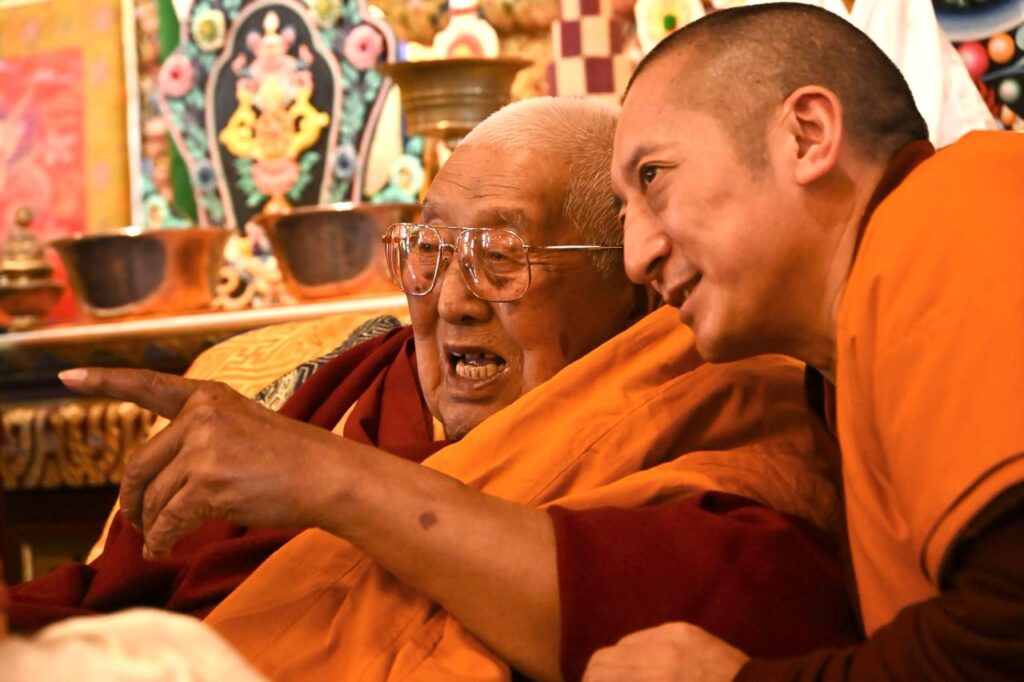
Meeting Rinpoche was like meeting an old friend. Many people feel shy and almost afraid to approach him, but I was not. I was not nervous at all. I felt I could chat with him. I told him, “I am coming from Beijing, and I would like to request Dzogchen teachings from you.” Rinpoche replied, “Dzogchenis not easy and it is very sacred. Students need to meet some conditions before they can receive it. I can help you with anything else you want to learn except Dzogchen.” Rinpoche was 83 at that time. He had been retired for a few years then. Also, his assistants thought he could not teach me, but I did not give up.
In Triten Norbutse, there was a Geshe from Nangzhig who was very knowledgeable, and I used to discuss Zen with him. He said: “You have learned Zen, right? You can talk about the views of Zen with Rinpoche tomorrow. Perhaps that will make an impression on him.” This was a very good idea. On the next day, I immediately said to Rinpoche that I had studied Zen in China. Rinpoche got very interested in it, and we talked for two hours.
At some point, Rinpoche said, “Oh, you understand Dzogchen! Bring the 21 Nails with you tomorrow. I will teach you.” The 21 Nails is the innermost secret teaching from Zhang Zhung Nyengyu. Our study began the next day. That was February 2008. Since then, I spent 3 to 5 months each year studying with Rinpoche for 17 or 18 years.
In all these years, I also continued to learn the trulkhor and tummo tirelessly. I went to Tsangwa Monastery of the Jonang school of Tibetan Buddhism in Dzamtang in Amdo. The 47th Jonang Trizin Jigme Dorje taught me the Kalachakra tummo and tsalung practices. I received the lineage from him for all the Jonang Kalachakra tummo and tsalung practices.
I also studied the trulkhor of Lamdre, or Path and its Fruits, of the Sakya school with the lineage holder Lamdripa Jamyang Sengge Rinpoche around the same time at the Dzongsar Gagu retreat center south of Derge in Kham, and I received the lineage from him. After that, Rinpoche invited me to go with him to visit monasteries in Inner Mongolia in China to teach the practice of trulkhor of Lamdre to hundreds of Chinese, Tibetan and Mongolian monks. Jamyang Sengge Rinpoche introduced them to the theory in the morning and I led the yoga practice in the afternoon.
Moreover, I traveled many times to Bhutan and received the teachings of the Six Yogas of Naropa there. For five years, I studied different tummo practices with Trizin Ngawang Tenzin of the Drugpa Kagyu school and received their lineage of all the tsalung yoga and Six Yogas of Naropa. I had retreats in these practices there.
In Bhutan, I further went to the monastery of Shabshog to study the trulkhor of the famous Bhutanese siddha Ringzin Pema Lingpa. By the way, the practices and movements are depicted in the rare murals of the Lukhang temple behind the Potala Palace in Lhasa. At that time, this was absolutely revolutionary: the practice of yoga had been kept secretly only among a few privileged practitioners. There is a book about these paintings by Ian Baker called The Dalai Lama’s Secret Temple.
I also went to the retreat center of Sherab Ling monastery in India and stayed for one month there. I studied the Six Yogas of Naropa with Tai Situ Rinpoche and received the lineage. I also received teachings and lineage of the Shangpa Kagyu tradition in Kham, including the lineage of the Six Yogas of Naropa and the Six doctrines of Niguma.
For the Nyingma tradition, I went to the birthplace of Pema Lingpa in eastern Bhutan, and received all the yoga lineage of this master. I also went to the retreat center of the Nyingma master called Adzom Drugpa, the Adzom monastery in Serta in Eastern Tibet to receive the lineage of Jigme Lingpa and stayed for one summer there. (Note: The monastery is in the region of Kandze in Kham, not far from Derge, and should not be confused with the well-known Serta Larung Gar Academy in the region of Serta further to the East). Furthermore, I went to Nangchen in Eastern Tibet to Tsognyi Rinpoche’s monastery and studied the tummo and trulkhor of Ringzin Rinna Lampa of the Nyingma school. In India, I studied trulkhor and tummo of the Nyingma school at Namdrol Ling. In addition, I went to Italy three times to study Yantra Yoga with Namkhai Norbu Rinpoche and received the lineage from him. He gave me the name Akarpa.
Last but not least, Geshe Phuntsok of the Ganden monastery in India taught me the practices of Tibetan yoga in the Gelug tradition.
In all these years, I learned around eight hundred different varieties of Tibetan yoga and mastered them in practice. Besides my own practice, now I focus on teaching the yoga to others.
I also learned how to depict trulkhor movements and I dedicate my time to this. Usually, we know trulkhor from descriptions in texts and from oral transmissions, but I have not seen many of those techniques in drawings or paintings. I thus created a thangka center in Kathmandu, learned to paint a bit, and together with a group of artists who are my friends, we focus on documenting all the trulkhor systems in paintings. We have been working on the thangkas for 10 years and still have not finished. My goal is to document the essential practices and movements of all religious schools on the thangkas. If those lineages disappeared, it would be a big loss for humankind.
I quite like to engage in creative and artistic activities. I recorded more than forty Bönpo mantras and the albums are on different music platforms. I made a documentary, and sometimes I perform ritual dances adapted by me for non-Tibetan audiences. They are very popular in Japan.
To help modern people in cities, I developed my own style of trulkhor based on what I have learned from various schools. Students from both the East and the West find the practice helpful. Some people may not like this approach, but I follow the rule “what is beneficial is good.” I spent more than 10 years developing the Himalaya cultural center in Beijing, and I founded Himalaya Dzogchen Ling in Hongkong in 2012. The aspiration is to spread the knowledge of Tibetan yoga outside Tibet. Those practices suit people in modern society very well.
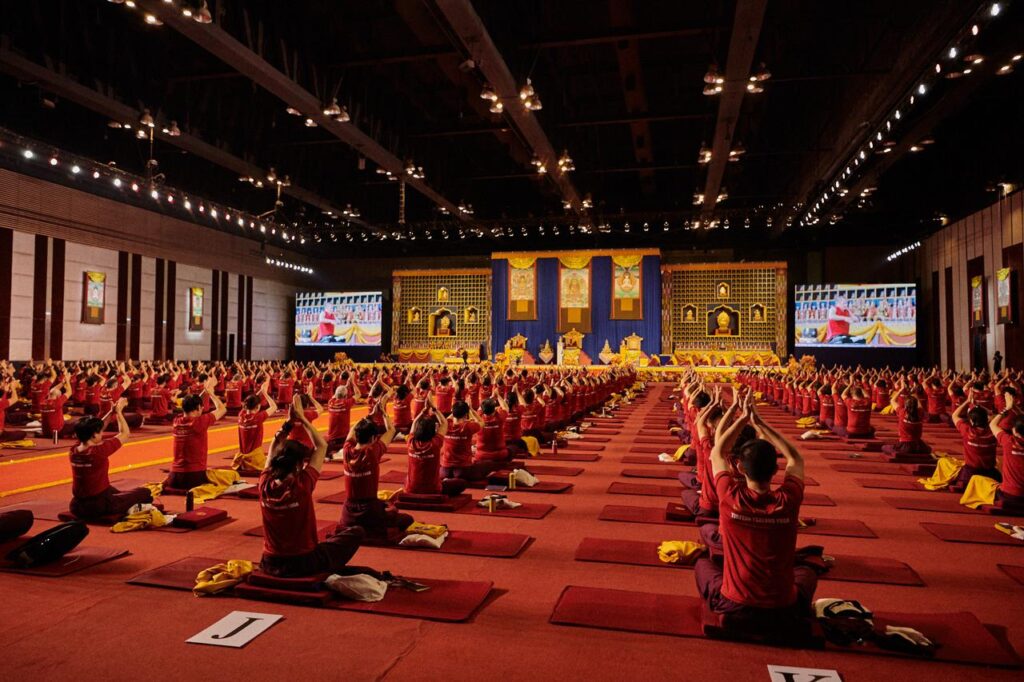
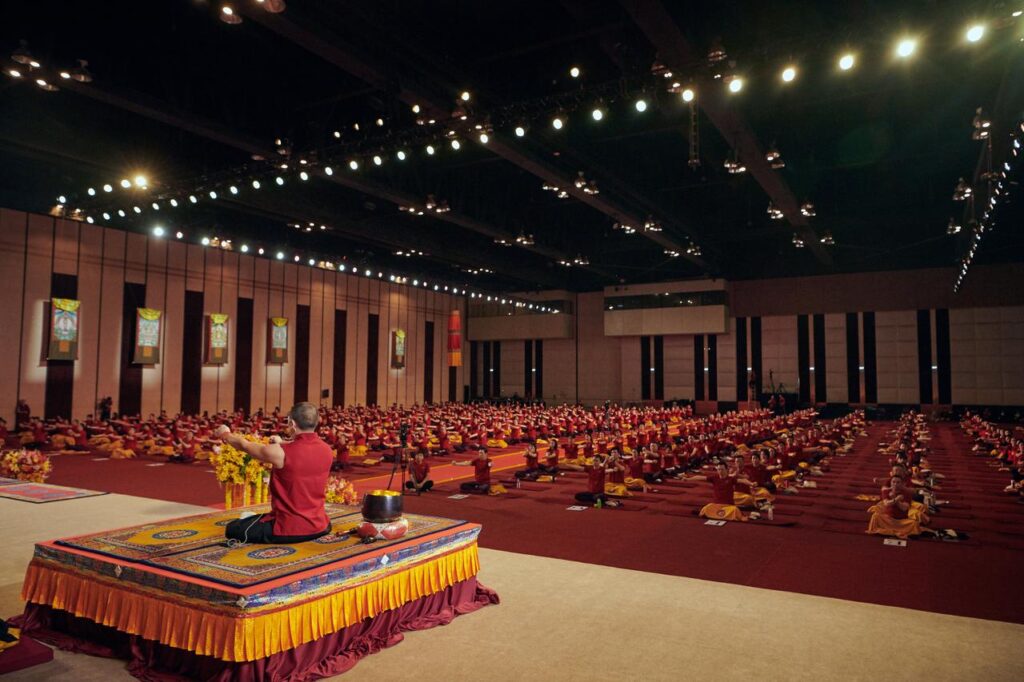
I also teach the practice of Dzogchen. This is based on the Bön tradition. My meditation is purely Bön, unmodified Dzogchen meditation.
Usually, I spend a few months every year in Kathmandu. During this time, I practice in a small place behind the former Yongdzin Rinpoche’s residence in Triten Norbutse. When I am out of Kathmandu, I stay in Beijing and Hong Kong where I established my centers, or I travel for teaching in other countries. From 2009, I started giving classes on Tibetan yoga and meditation systematically. My students are in part Buddhists and in part just common people. Many of them are very successful in their work but experience difficulties and disbalances in their body and mind. In many courses I teach them just breathing exercises, no movements. Besides trulkhor, I teach meditation, including a particular kind of meditation which involves all five senses. Sometimes my students and I do walk meditation.
My teaching for Buddhists is free of charge, and I do not collect offerings in any form. But the application process is selective. I choose students who have significant life experiences, have gone through ups and downs, resonate with the teaching about love and compassion, are able to take responsibility for their own lives, are courageous and able to take challenges. What does it mean to be a Buddhist? It means to challenge oneself to a new beginning. People without courage are not suitable for this path. And my students also need to be a bit crazy, not too serious about life. Life is a game, and it is absurd. So, don’t take it too seriously. Mainly Chinese Buddhists take part in my courses. Some are very serious practitioners, and I give them all kinds of Buddhist teachings.
Instead, I do charge for my classes for non-Buddhists, and the price is quite high. To these, everyone who applies is accepted. I use the money to finance my other activities and to support beneficial activities of others.
I travel to teach around Asia and elsewhere as well. I have been to the United States many times, teaching mainly people of Chinese origin living there. I go to teach in Europe too: Norway, Switzerland, Spain, and France. This year, I will be traveling to Belgium, Germany, France and Switzerland. I teach mainly in Tibetan and sometimes in Chinese. My English is not good enough; I learned it only informally.
This year in June, I will be going to teach at Shenten Dargye Ling, for the first time. I am looking forward to it, but I wonder if in a monastic institution with a strict discipline like Shenten Dargye Ling I will be able to interact with my students as I usually do. My students and I like having fun together. In the evenings, we like dancing, playing, and talking together. We benefit from a relaxed and informal atmosphere.
The title picture: Jitka Polanska
The pictures inside the article: credit to Akarpa Lobsang Rinpoche














